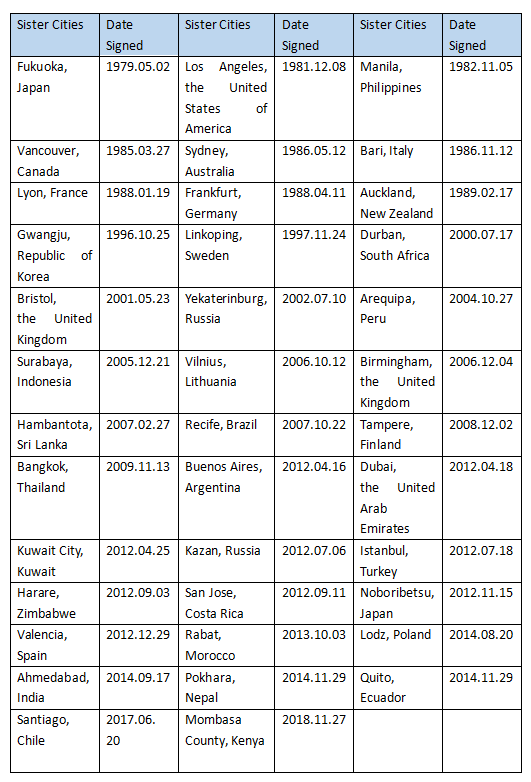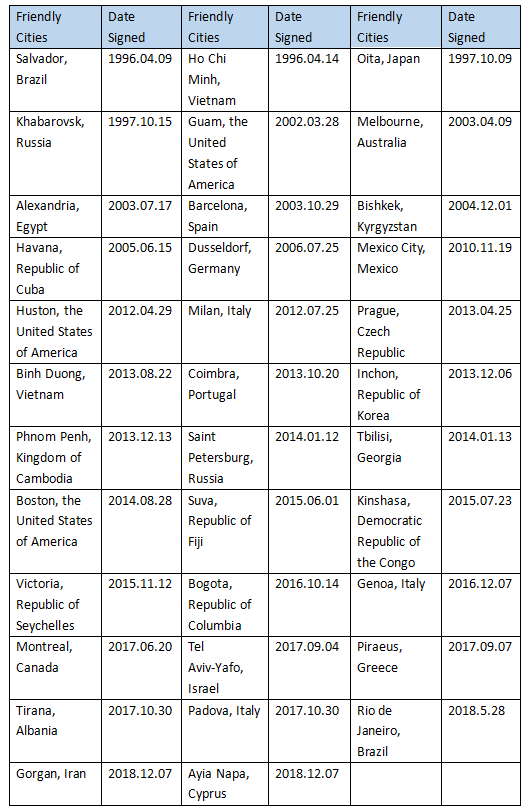China's third largest city

1. Basic Information
Name: Guangzhou
Population: 18,676,605 (2020)
Area: 7,434.4 square kilometers
Location: Guangzhou sits at the lower reaches of the Pearl River in the province's south-central region and north of both the Hong Kong and Macao special administrative regions.
2. Administrative Division:
Guangzhou is a sub-provincial city. It has direct jurisdiction over 11 districts: Yuexiu, Liwan, Haizhu, Tianhe, Baiyun, Huangpu, Huadu, Panyu, Nansha, Conghua and Zengcheng.
3. History and Culture:
With a rich history of over 2,230 years, Guangzhou has been awarded State Council recognition as a National Famous Historic and Cultural City. Under the reign of Emperor Qinshihuang in 214 BC, the State of Qin conquered the region of Lingnan. The construction of Panyu Town soon followed under the order of Nanhai Governor Ren Xiao. The town, commonly referred to as Ren Xiao town, is the first origins of what would later become a prosperous grand harbor of the Maritime Silk Road and the thriving metropolis of modern-day Guangzhou.
An ancient legend tells of five celestial beings descending upon Guangzhou riding five rams of differing colors. In the mouths of the rams were sheaves of rice. It is said that the celestial beings bestowed the sheaves of rice on the people of Guangzhou so that the city would be forever free from famine. A sculpture of five rams currently stands in the city's Yuexiu Park, and along with this legend has earned Guangzhou the nickname "The City of Rams".
4. Economy
Guangzhou, capital of Guangdong province, is one of the main manufacturing hubs of the Pearl River Delta. Guangzhou's GDP reached 2.3 trillion yuan ($334.03 billion) in 2018. General public budget revenue climbed to 163.23 billion yuan, increasing by 9.9 percent. The number of high-tech enterprises has exceeded 10,000, and the per capita disposable income of the urban and rural residents grew by 8 percent and 10 percent.
5. Tourism
Guangzhou boasts a wide range of tourism attractions. Famous parks and gardens worth visiting include Baiyun Mountain, Nansha Wetland Park, South China's Botanic Garden, Martyrs' Park and Pearl River Park. Famous tourism attractions include Canton Tower, Chime--Long Waterpark, Guangzhou Zoo, Museum of the Mausoleum of the Nanyue King and Sun Yat-sen Memorial Hall.
6. Resources
There are 47 different types of minerals and also 820 ore fields in Guangzhou, including 18 large and medium-sized oil deposits. The major minerals are granite, cement limestone, ceramic clay, potassium, albite, salt mine, mirabilite, nepheline, syenite, fluorite, marble, mineral water, and geothermal mineral water. Since Guangzhou is located in the water-rich area of southern China, it has a wide water area with lots of rivers and water systems, accounting for 10 percent of the total land area. The rivers and streams improve the landscape and keep the ecological environment of the city stable.
7. Sister Cities and Friendly Cities


MOST POPULAR
- 1 Foreign tourists to enjoy instant tax refund in China
- 2 China releases white paper on China-US economic, trade relations
- 3 China vows to help export enterprises
- 4 China will resolutely take countermeasures if US escalates tariff measures: commerce ministry
- 5 China's version of 'stock market stabilization fund' launched
Editors' Picks
 Infographic:
Key milestones in China-Malaysia relations
Infographic:
Key milestones in China-Malaysia relations






